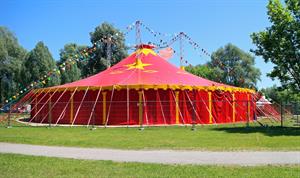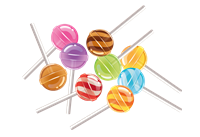PDF chapter test TRY NOW
In our day-to-day life, we come across a wide range of objects in the form of a combination of two or more solid shapes.
Let us discuss some real-life examples in this article where we can find the combination of one or more solids and learn how to find their volumes.
1. Capsule

The capsule is a combination of two solids, cylinder and hemisphere.

2. Circus tent

The circus tent is a combination of a cone and a cylinder.

3. Lollipop

The lollipop is a combination of a sphere and a cylinder.

Example:
The glass in the form of a cylinder surmounted on a hemisphere has a uniform radius of 4 cm and, the height of the cylindrical part is 7 cm. Find the capacity of the glass.
Solution:
The volume of the glass = Volume of the hemisphere +Volume of the cylinder
Volume of the glass = \frac{2}{3} \pi r^3 + \pi r^2 h
= \left[\frac{2}{3} \times \frac{22}{7} \times (4)^3\right] + \left[\frac{22}{7} \times (4^2) \times 7 \right]
= \left[\frac{2}{3} \times \frac{22}{7} \times 64\right] + \left[\frac{22}{7} \times 16 \times 7 \right]
= 134.1 + 352
= 486.1 cm^3
Therefore, the capacity of the glass is 486.1 cm^3.
